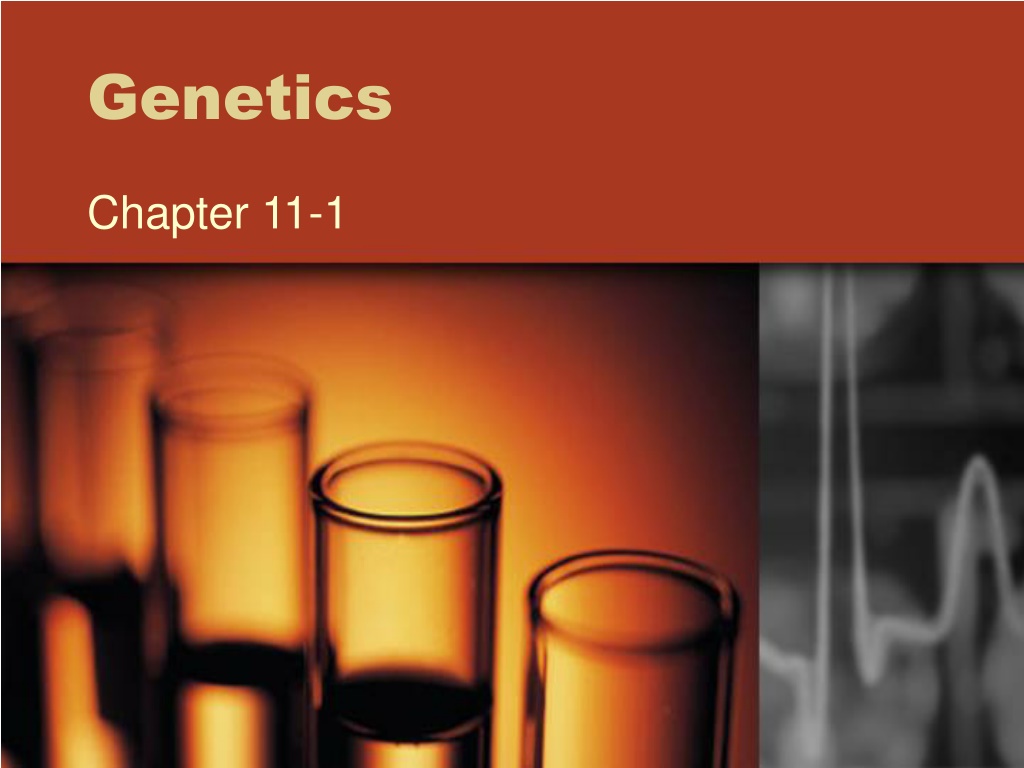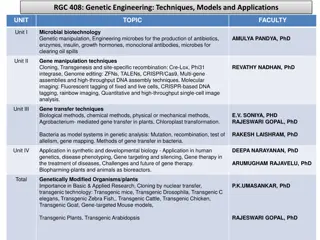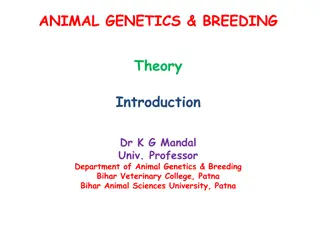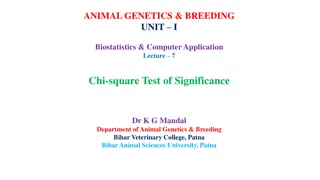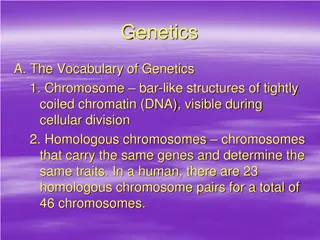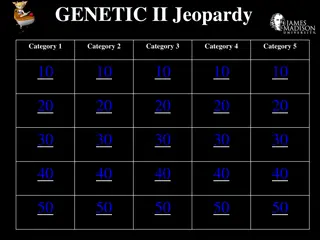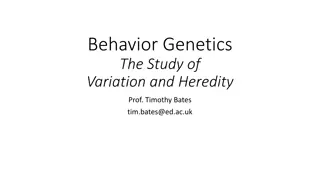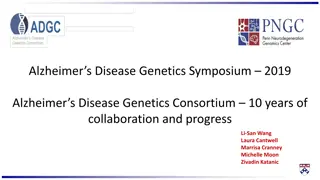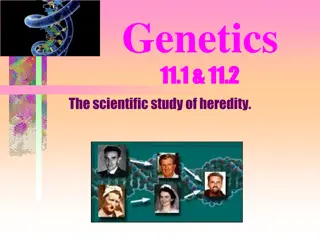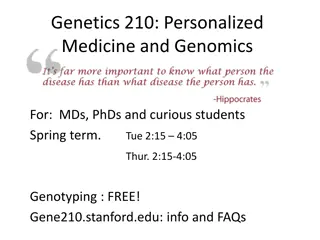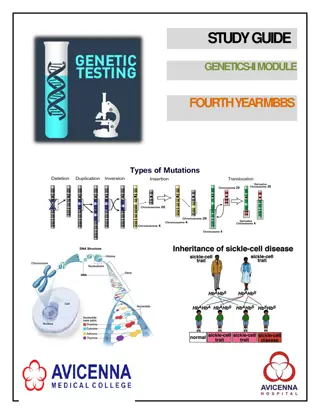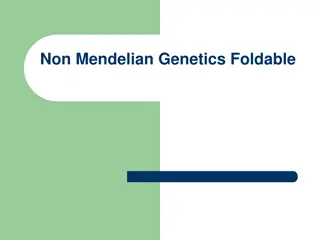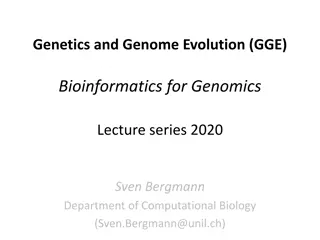Genetics
"The study of heredity, genetics, explores traits in organisms through Gregor Mendel's groundbreaking experiments with pea plants. Discover the significance of true-breeding plants, dominant and recessive alleles, and how traits are inherited. Dive into the world of alleles, genes, and hybrids as Mendel reveals the principles of genetic inheritance."
Uploaded on Feb 16, 2025 | 0 Views
Download Presentation

Please find below an Image/Link to download the presentation.
The content on the website is provided AS IS for your information and personal use only. It may not be sold, licensed, or shared on other websites without obtaining consent from the author.If you encounter any issues during the download, it is possible that the publisher has removed the file from their server.
You are allowed to download the files provided on this website for personal or commercial use, subject to the condition that they are used lawfully. All files are the property of their respective owners.
The content on the website is provided AS IS for your information and personal use only. It may not be sold, licensed, or shared on other websites without obtaining consent from the author.
E N D
Presentation Transcript
Genetics Chapter 11-1
The Science of Heredity The scientific study of heredity is called GENETICS
Gregor Mendel Pea Plant Experiment Gregor Mendel chose pea plants to conduct genetic experiments because of their plant life special properties. For example: When pollen fertilizes an egg cell, a seed for a new plant is formed. Pea plants normally reproduce by self-pollination.
Gregor Mendel Pea Plant Experiment What does it mean when pea plants are described as being true- breeding? If the plants are allowed to self- pollinate, they would produce offspring identical to themselves.
Gregor Mendel Pea Plant Experiment To perform his experiments, how did Mendel prevent pea flowers from self-pollinating and control their cross-pollination? He cut away the pollen-bearing male parts of a flower and dusted that flower with pollen from another plant.
Gregor Mendel Pea Plant Experiment Traits - Specific characteristics that vary from one individual to another Hybrids-The offspring of crosses between parents with different traits Genes - Chemical factors that determine traits Alleles - The different forms of a gene
Alleles State the principle of dominance. Some alleles are dominant and others are recessive.
Alleles An organism with a recessive allele for a particular form of a trait will NOT always exhibit that form.
Characteristics of Traits In Mendel s Pea experiment traits controlled by dominant alleles were tall plants and the yellow flowering traits.
Characteristics of Traits How did Mendel find out whether the recessive alleles were still present in the F1 plants? He allowed the F1 plants to produce an F2 generation by self-pollination.
Characteristics of Traits About one fourth of the F2 plants from Mendel s F1 crosses showed the trait controlled ______ by the allele. recessive
Characteristics of Traits Mendel assumed that a dominant allele had masked the corresponding recessive allele in the F1 generation.
Characteristics of Traits At some point, the allele for shortness was segregated, or separated, from the allele for tallness.
Characteristics of Traits What are gametes? They are the sex cells.
In the diagram above, the dominant allele is represented by ___and the recessive allele is represented by __ .
Probability and Punnett Probability and Punnett Squares Squares Section 11 2
Probability The likelihood that a particular event will occur is called_______. Probability
Probability Circle the letter of the probability that a single coin flip will come up heads. a. 100 percent b. 75 percent c. 50 percent d. 25 percent
Probability Is the following sentence true or false? The past outcomes of coin flips greatly affect the outcomes of future coin flips. False
Probability Why can the principles of probability be used to predict the outcomes of genetic crosses? The way in which the alleles segregate is completely random, like a coin flip.
Punnett Squares How do geneticists use Punnett squares? Punnett squares can be used to predict and compare the genetic variations that will result from a cross.
Punnett Square Complete the Punnett square to show the possible gene combinations for the F2 offspring.
Allele Types Homo - Same Hetero - Opposite Pheno Physical Geno - Genetic
Allele Types Definitions Organisms that have two identical alleles particular trait (TT or tt) Homozygous Organisms that have two different alleles same trait (Tt) Heterozygous Physical characteristic of an organism Phenotype Genetic makeup of an organism (Tt) Genotype
Gene Expression Are the following sentences true or false? - Homozygous organisms are true breeding for a particular trait. False - Plants with the same phenotype always have the same genotype. False
Probability and Segregation b. The F2 ratio of tall plants to short plants produced in a cross between two hybrid tall pea plants (Tt) is 3 tall plants for every 1 short plant. c. Mendel observed that about 3 4 of the F2 offspring showed the dominant trait. d. Segregation occurs according to Mendel s model.
Probability In Mendel s model of segregation, what was the ratio of tall plants to short plants in the F2 generation? The ratio was 3 : 1.
Probability Is the following sentence true or false? Probabilities predict the precise outcome of an individual event. False
Probability How can you be sure of getting the expected 50 : 50 ratio from flipping a coin? You must flip the coin many times.
Probability 17. The _____ number of offspring from a genetic cross, the closer the resulting numbers will get to expected values. Larger
Probability Is the following sentence true or false? The ratios of an F1 generation are more likely to match Mendelian predicted ratios if the F1 generation contains hundreds or thousands of individuals. True
Exploring Mendelian Exploring Mendelian Genetics Genetics Section 11 3
Independent Assortment Independent Assortment In a two-factor cross, Mendel followed______ different genes as they passed from one generation to the next. 2
Independent Assortment Write the genotypes of the true- breeding plants that Mendel used in his two-factor cross. Phenotype Genotype a. round yellow peas __RRYY_ b. wrinkled green peas __rryy_
Independent Assortment Heterozygous dominant with round yellow peas, best describes the F1 offspring of Mendel s two-factor cross.
Independent Assortment Is the following sentence true or false? The genotypes of the F1 offspring indicated to Mendel that genes assort independently. False
Independent Assortment How did Mendel produce the F2 offspring? He crossed F1 plants to each other.
Independent Assortment Circle the letter of the phenotypes that Mendel would expect to see if genes segregated independently. a. round and yellow b. wrinkled and green c. round and green d. wrinkled and yellow
Independent Assortment What did Mendel observe in the F2 offspring that showed him that the alleles for seed shape segregate independently of those for seed color? He observed F2 offspring that had combinations of phenotypes and therefore combinations of alleles not found in either parent.
